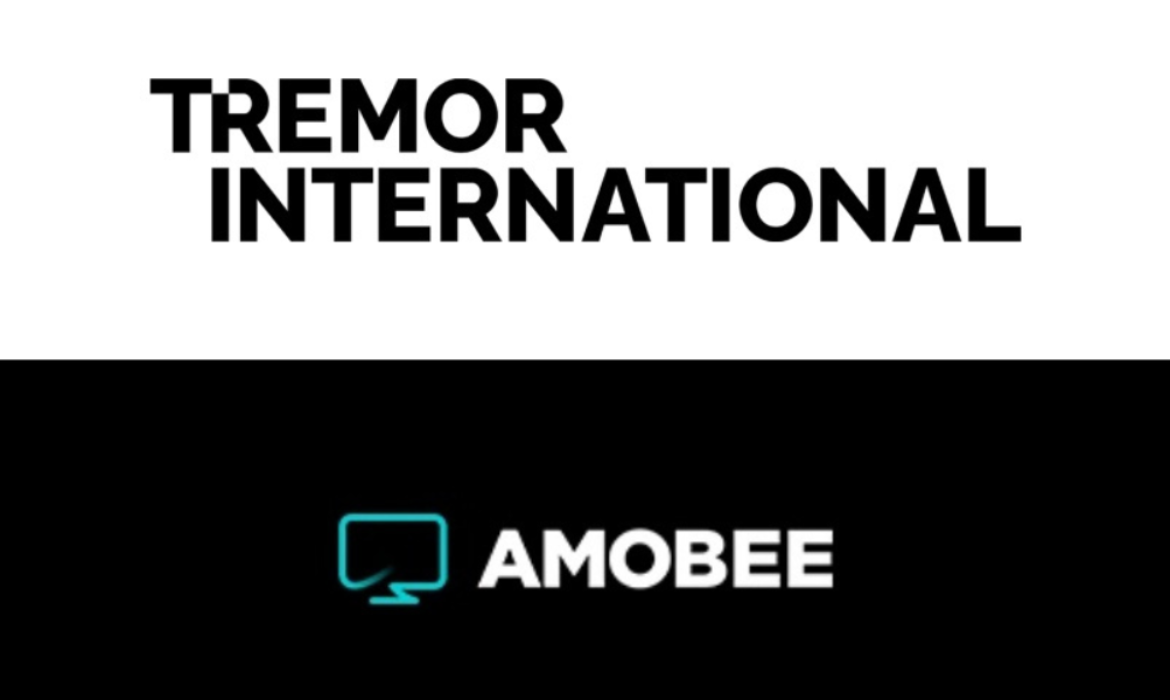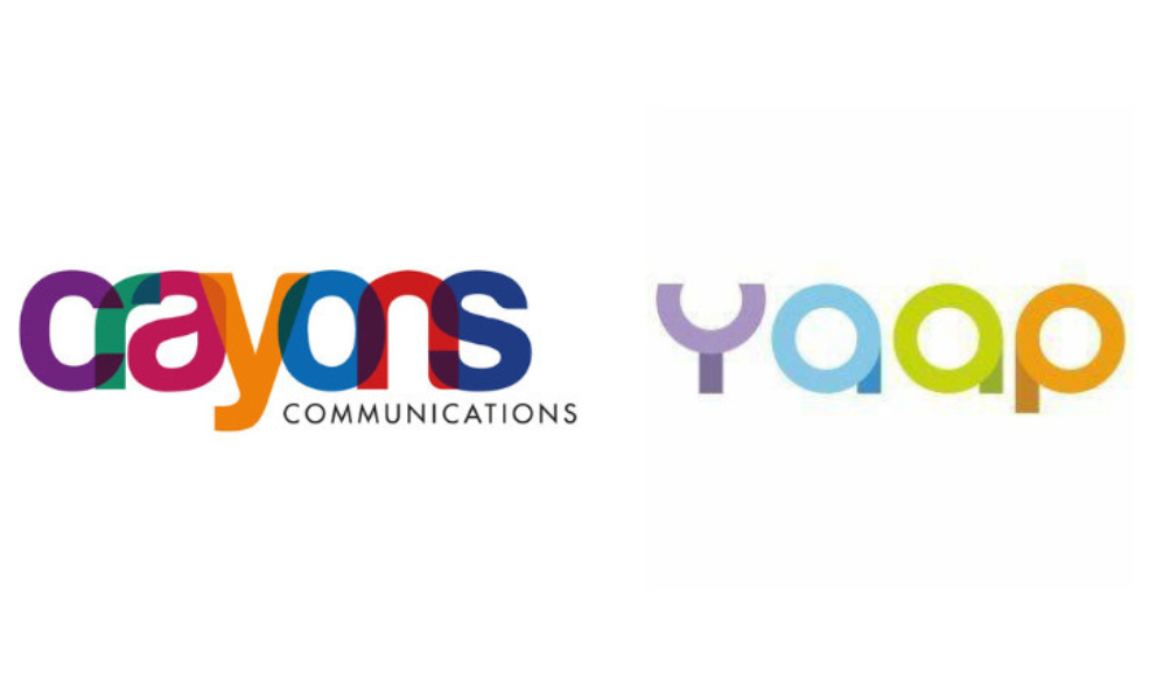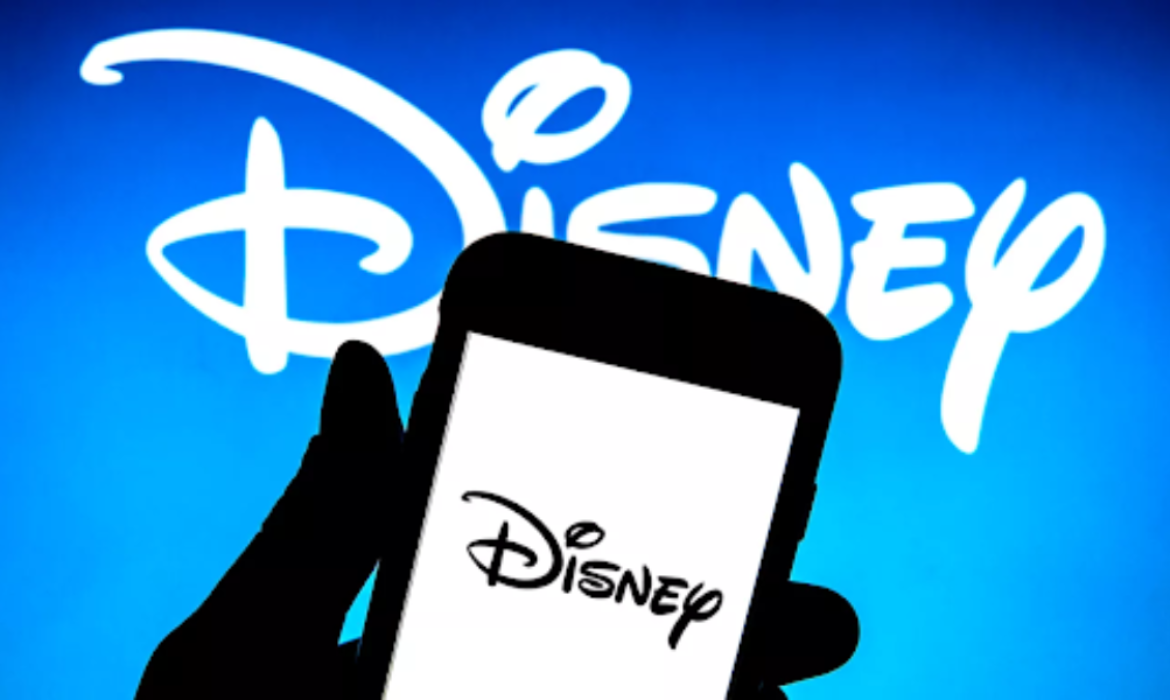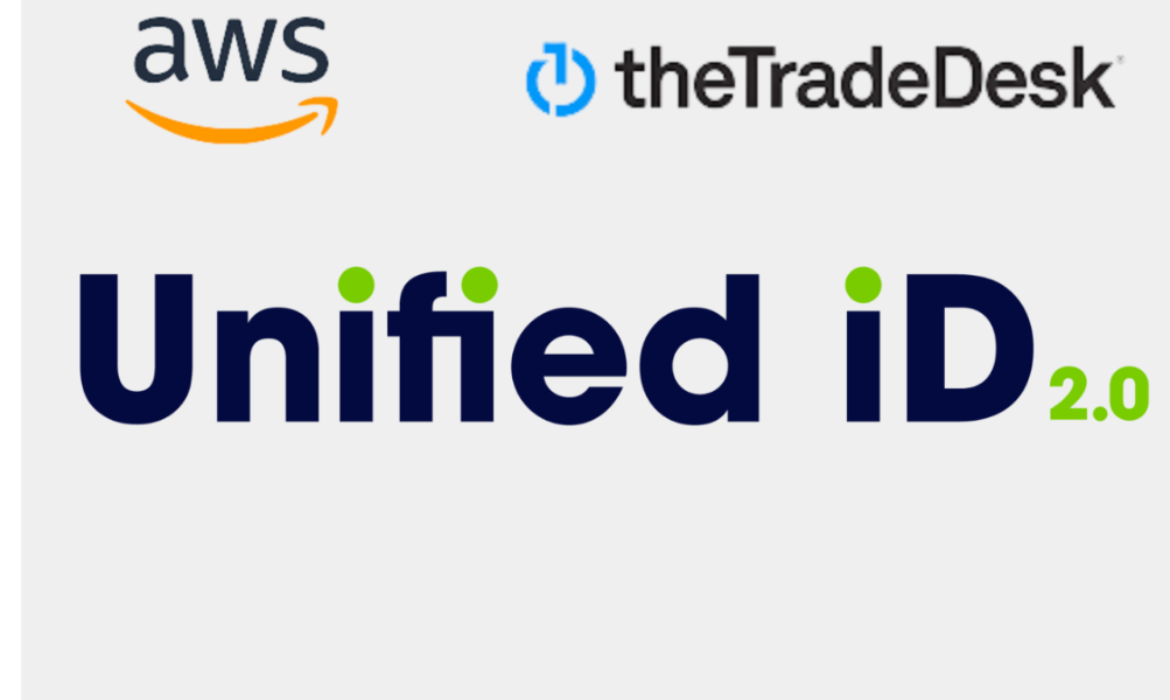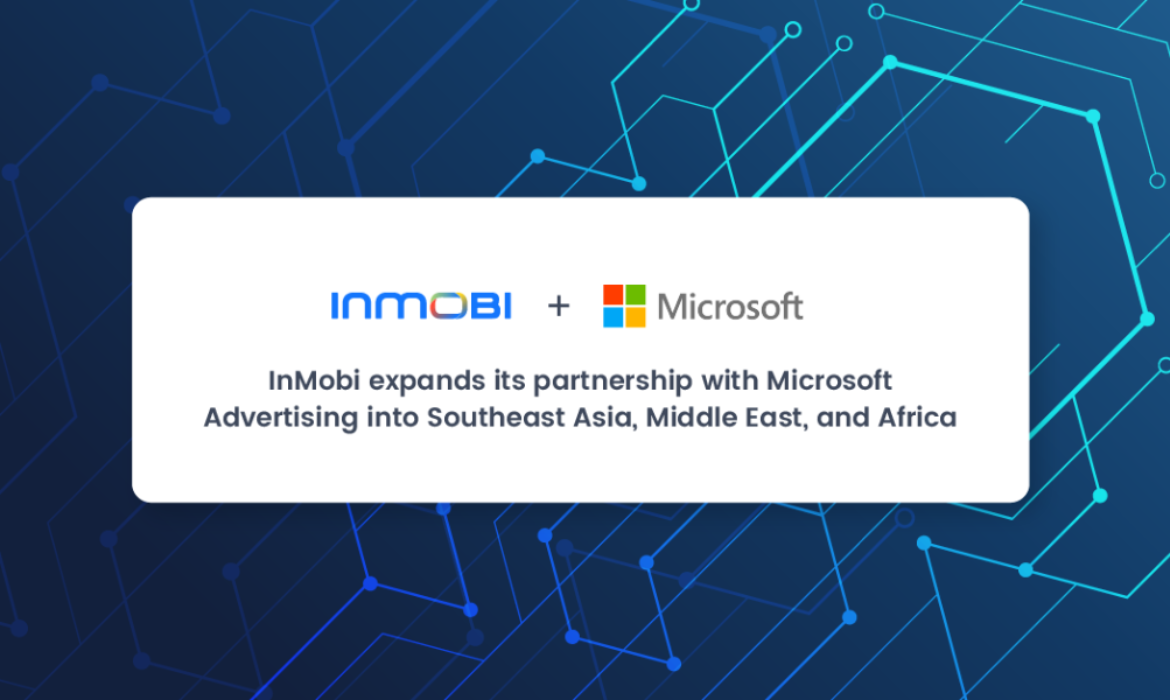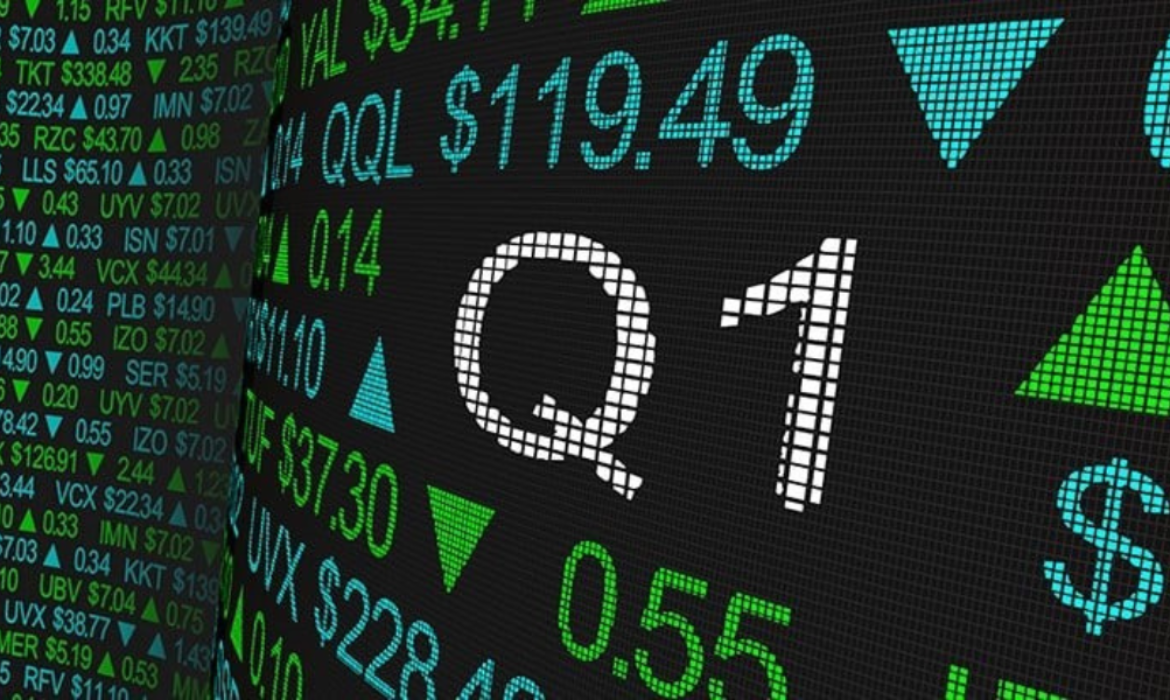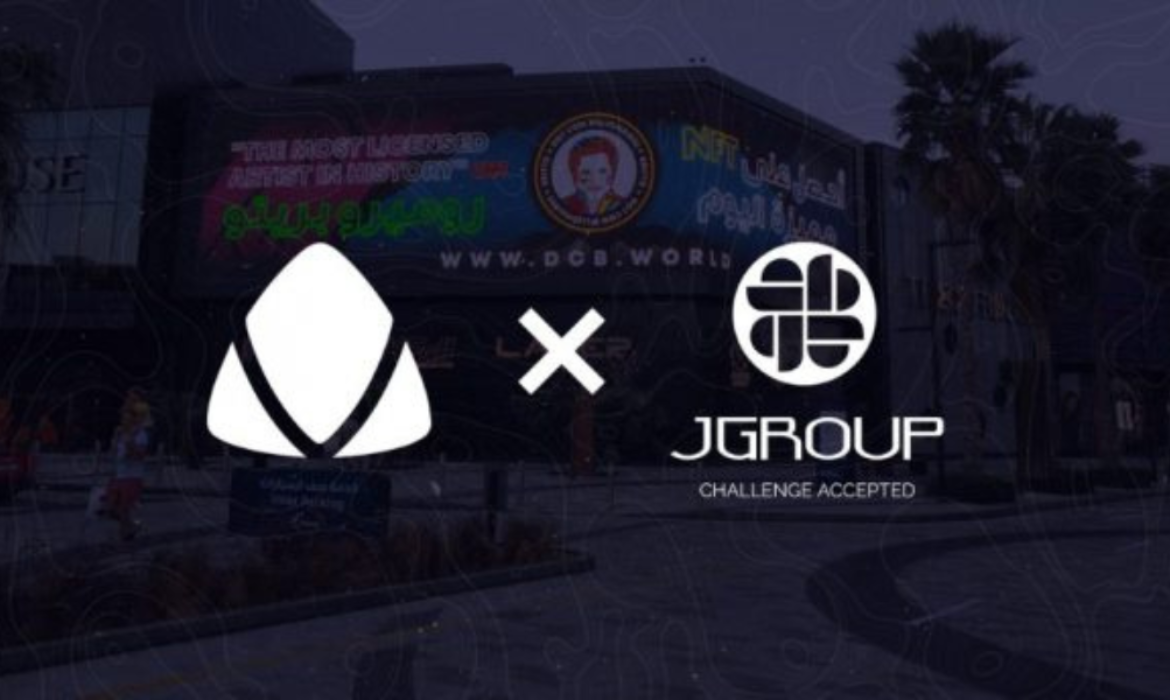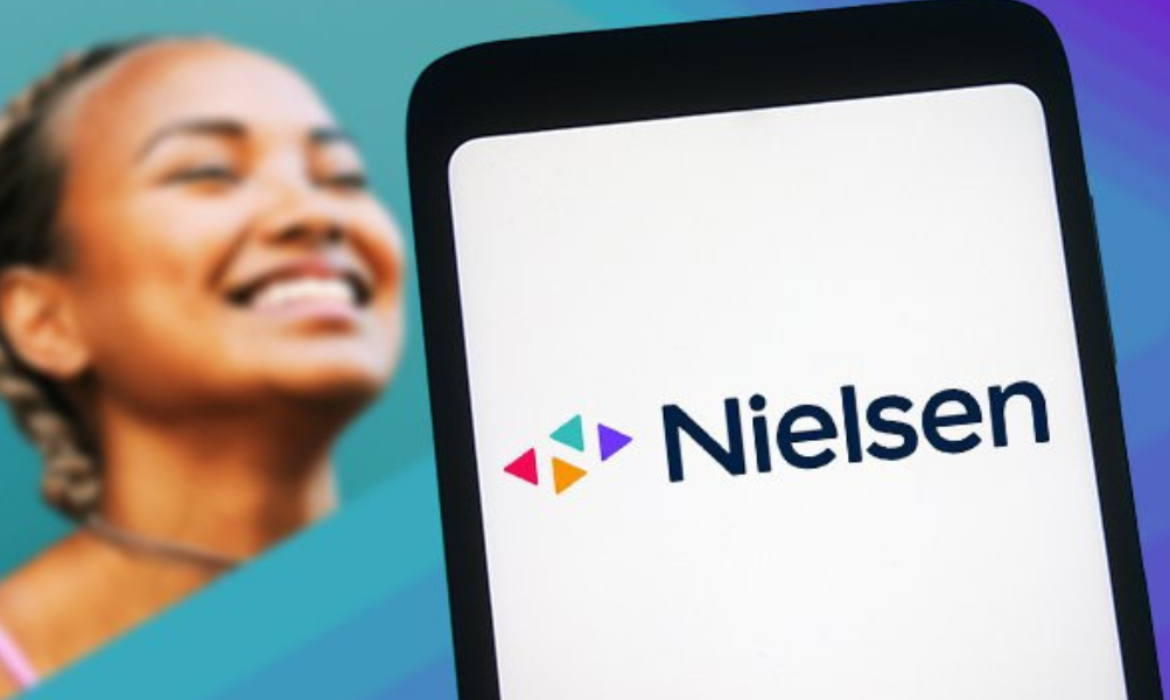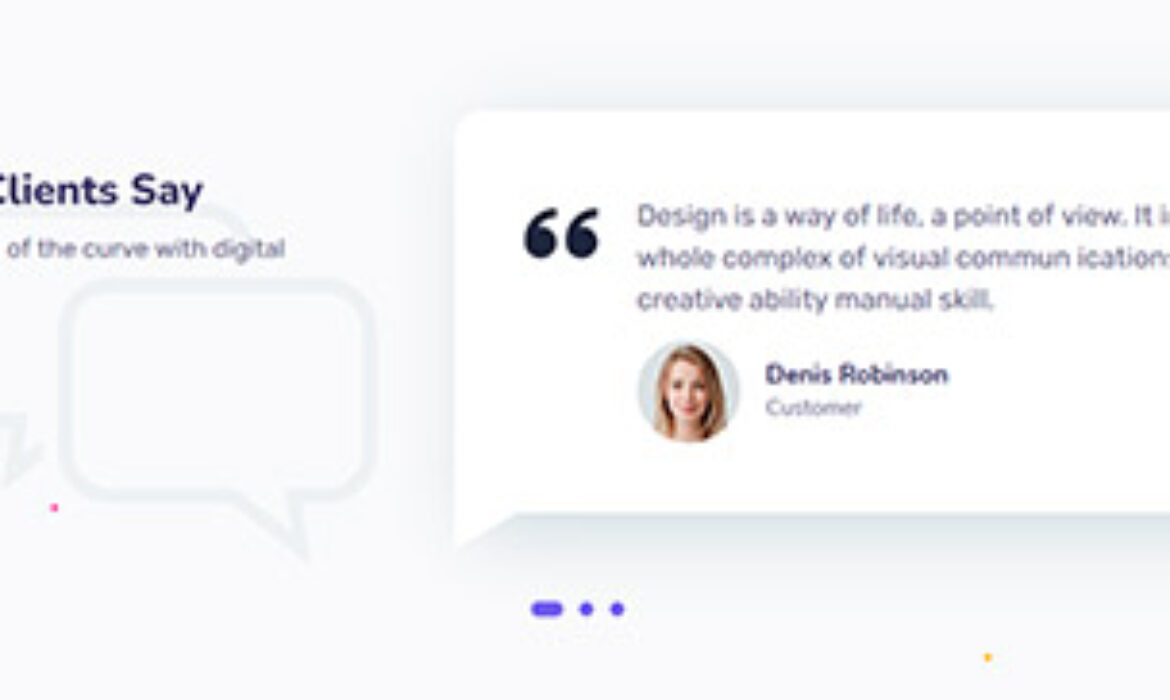Why Adtech Firm Tremor International Buys DSP Amobee For $239 Million
Tremor International, a video-focused advertising-technology company, is buying Singtel’s digital arm Amobee, a cross-channel, demand-side advertising platform, for $239 million. It will acquire Amobee’s Omnichannel Demand Side Platform and Advanced TV Platform.
Singtel first bought Amobee in 2012 for $321 million, making this latest deal quite a steal. Singtel says the divestment is in line with its strategic reset to revamp its business focus and recycle capital and assets into higher-returning growth areas. The transaction is expected to close in the third quarter.
Interesting Read: Connected TV Explained: The Essential Glossary Of CTV
How this acquisition benefits Tremor?
– The acquisition is expected to create one of the most compelling and scaled CTV and video end-to-end platforms in the market. It is expected to drive incremental financial growth within the first twelve months of completion.
– The deal is intended to expand Tremor’s demand-side market share. The transaction expands its self-service DSP, CTV, and video reach, while creating new technology and partnership opportunities, including the ability to integrate major linear capabilities.
– Over the past couple of years, Amobee has been branching out into advanced TV. Amobee uses CTV to supplement and support linear TV, which remains a large part of the market despite streaming.
– The combined company seeks to benefit from meaningful annual run-rate operating cost synergies. It would build upon Tremor’s proven track record of successfully integrating acquisitions to drive growth, scale, and long-term value for shareholders at attractive valuations.
– Ofer Druker, chief executive officer of Tremor International, said in a release that the deal “would increase our U.S. and international customer reach and data footprint, and drive more advertiser spend to our SSP Unruly.”
Tremor International has scaled and deepened their strategic relationship through a $25 million in VIDAA, the smart TV operating system subsidiary of Chinese-based TV set maker Hisense Co. The company is looking to be a major player in TV OS as well as connected TV (CTV). With that deal, Unruly became VIDAA’s exclusive supply-side platform for North America, Europe, Canada, and Australia.
– It would expand Tremor’s international presence as Amobee currently serves over 500 global customers including McDonald’s, Johnson & Johnson, Verizon, and Comcast, and maintains strong relationships with some of the world’s leading media partners.
Tremor’s ad tech roll-up spree just got a whole lot deeper with Amobee’s inclusion.
Interesting Read: Bridging The Gap: Is YouTube Unifying Linear And CTV Ad Buying?
YAAP Expands UAE Presence, Acquires Crayons Communications
YAAP a specialized content and influencer marketing company with operations in the UAE, India, and Singapore, has fully acquired Crayons Communications. In a 100% acquisition, Crayons Communications will merge with YAAP.
YAAP acquires Crayons Dubai
With Crayons Communications as a wholly-owned subsidiary of YAAP, clients can maintain their existing relationships with both organizations while gaining access to synergistic value.
In recent months, YAAP has expanded its market footprint and product offerings, resulting in stellar growth. Its clientele includes Coca-Cola, Visit Dubai, Lufthansa, RuPay, American Express, Disney, Amazon, and Square Enix, among other leading brands. In FY21-22, YAAP achieved impressive top-line growth of 97% and a 5X increase in profitability. Thereafter, it has been in the process of scouting for strategic acquisition opportunities across the GCC’s digital content and media landscape.
Crayons Communications boasts over 14 years of market presence in the Middle East with offices in Dubai, Riyadh, and Manama. From homegrown giants such as the Apparel Group and Kaya to MNCs such as Fitbit, Crayons Communications’ portfolio characterizes a rare balance of global-local clients and expertise developed by virtue of longevity.
Kunal Lalani, founder and chairman of Crayons Communications Group said YAAP coming in will create more opportunities for the company and all the clients will benefit from a wide array of new services.
Interesting Read: Dubai To Host Global Metaverse Event, Unveils Its Ambitious Strategy
New services and solutions
Crayons Communications adds key markets to YAAP’s footprint across three countries and seven cities. YAAP is currently developing solutions suites pertaining to Web 3.0 and the Metaverse.
As innovations such as Web 3.0 and the metaverse become more popular, brands are increasingly interested in end-to-end service providers. The advertising expertise of Crayon Communications complements YAAP’s core strengths in influencer, performance, programmatic, and affiliate marketing, as well as Web 3.0 and the metaverse, resulting in an unmatched synergistic value proposition.
It is expected that the Crayons communication management will continue to work in their respective roles and that the workforce will expand.
And that’s what they said
Atul Hegde, Founder of YAAP-
“YAAP has been actively looking to expand its presence in the UAE in particular and the GCC region as a whole. The Crayons Communications acquisition comes at the right time and gives us a great platform to bring our award-winning services in Influencer Marketing & Performance Media to this part of the world. Crayons has a good foundation of established clients that will help us quickly ramp up our service offerings here. We want to be a dominant player in IM, Web 3.0 (with a focus on building for the Metaverse), and media services. Going forward, as the markets correct globally, it presents us a great opportunity for more such acquisitions in this region.”
Arshad Zaheer, CEO of Crayons Communications-
“I’m super excited to be part of the YAAP group now. With an added network of 7 cities and 100+ digital experts at YAAP, it opens up a whole new world of offerings for us in this region. We are known for always punching above our weight in the past with mega projects like the Chris Hemsworth film for Bayut, the Dubai super sixes property or The Bayut: your home, your choice awards, now our ambitions and goals will be much larger!”
Interesting Read: How Will Dubai’s Metaverse Sector Contribute To Its Economy By 2030?
Disney Signs A Major Adtech Deal With The Trade Desk
Disney inked a landmark adtech deal with The Trade Desk. This makes it possible for brands to target automated ads across Disney’s linear and streaming properties using data matched on the back end from Disney and The Trade Desk. The deal will power greater audience activation at scale programmatically.
What makes this deal so important:
-In the era of third-party tracking that is fading away, this is one of the largest efforts to come up with a new system of ad targeting. It will likely spark more similar partnerships between media companies and big ad tech firms.
-Disney wants to make sure its inventory is as addressable as possible. The partnership with leading adtech company, The Trade Desk will enable advertisers to activate their own first-party data to enrich Disney ad impressions, improve ROI, and drive relevance while also protecting consumer privacy.
-Disney can sell more ads at scale with automation, and the Trade Desk partnership will allow advertisers to buy automated ads without giving up their ability to target them precisely.
Interesting Read: Clean Rooms Explained: How Marketers Can Prepare For Cookieless World
Details
-In the deal, Disney integrates data from its Clean Room, a privacy-conscious repository of user data Disney gathers directly from its users. They then match it with personalized data created by a framework called Unified ID 2.0, promoted by The Trade Desk.
-This agreement will enable a first-of-its-kind integration between Disney’s proprietary Audience Graph and the open-source identity framework, Unified ID 2.0, within a secure environment. As a result, buyers will be able to discover more addressable, biddable inventory across the Disney portfolio, all validated by Disney’s proprietary Audience Graph.
-Disney has previously said it wants to automate 50% of its business by 2026. At last year’s upfront advertising sales event, over 40% of the ad inventory Disney sold was automated. The deal will help them achieve the goal.
-Disney has years of experience with adtech and is working to strengthen its tech capabilities. A few months back, the company also inked an adtech deal with Horizon Media to measure ads.
-Disney is in partnership with Hulu has built its own server and has enormous experience in advertising VOD space.
-As the streaming advertising landscape becomes more competitive, The Trade Desk partnership surfaces just as Disney is working on its ad-supported tier for Disney+. Because this will work across Disney’s inventory and is designed to automate ad buying across channels and services, it makes sense that Disney+’s forthcoming ad-supported tier would be included in the future.
Bottom Line
Disney’s agreement with The Trade Desk is a key milestone in enabling greater interoperability with the programmatic ecosystem at large while setting the stage to power better audience activation and measurement.
Digital television advertising has long been a Disney forte, but now more streaming services, such as Netflix, are considering digital advertising.
Interesting Read: AVOD Surprise: Netflix Advertising Powered By Microsoft
And they said
Aaron LaBerge, President, and Chief Technology Officer, Disney Media & Entertainment Distribution-
“Disney is reimagining our advertising platform to support a global and addressable future. We are uniquely positioned to match the world’s greatest content with next-generation products and technologies, through a secure and unified ad platform, and one-of-a-kind first-party data. The growth of our relationship with The Trade Desk is a milestone in addressability and automated buying at scale, and the latest step as we use technology to enable advertisers to buy once to deliver everywhere across Disney.”
-Tim Sims, Chief Revenue Officer, The Trade Desk-
“With this agreement, Disney and The Trade Desk are pioneering a new approach to audience addressability in a post-cookie environment. By creating interoperability between Unified ID 2.0 and Disney’s Audience Graph, we are unlocking the opportunity for our customers to activate their first-party data at scale programmatically, against some of the world’s most premium content, across all channels. As a result, advertisers will be able to deliver relevant advertising, while ensuring consumers have more control of their own privacy.”
Interesting Read: Marriott International : A Hotel or An Ad Tech Company?
Amazon Web Services Partners With Trade Desk’s UID2 To Integrate First Party Data
Amazon Web Services, one of the most popular data hosting services for marketers partners with the Trade Desk’s UID2 (Unified ID 2.0) at the Cannes Lions Festival.
What is UID2?
UID2 is a non-proprietary, open-sourced alternative identifier developed by The Trade Desk and supported by over 40 publishers. It enables advertisers, agencies, ad technology companies, and publishers selling advertising to continue providing relevant, personalized advertising without third-party cookies. It also provides mechanisms for consumer consent with transparency baked in.
Interesting Read: The Trade Desk & Lifesight Partnership: What It Means For Indian Marketers!
What is the partnership about?
AWS will serve as a private operator of UID2 through the partnership. In essence, this means the company will handle its own internal version of UID2 to generate and manage the identity solution. Marketers can match their first-party data via the Amazon web services marketplace to facilitate programmatic ad placement efficiently.
The integration allows Amazon to place programmatic ads without exposing sensitive user data externally since it takes advantage of AWS Nitro Enclaves, a facility it says provides better security for customers’ personally identifiable information.
A second advantage of the pair’s integration is that PII is never directly disclosed to external parties since UID2 identifiers are encrypted into so-called “ephemeral UID2 tokens” that are shared to match users with bid requests. Furthermore, the pair says that PII will never be communicated directly between external parties due to UID2 identifiers being encrypted into non-persistent “ephemeral UID2 tokens,” which are provided to match users with bid requests.
In an emailed statement reported by Digiday, Adam Solomon, worldwide head of data collaboration & interoperability solutions, advertising & marketing tech industry at AWS said,
“One of the key requirements of running a UID2 Private Operator Service is a trusted environment for the UID2 operator application to process users’ private data, such as a user’s phone number or email address so that sensitive data isn’t accessible to other UID2 operators and providers.”
Customers who want to run UID2 workflows in the cloud will not have to do any heavy lifting with this solution. They can easily deploy UID2 Private Operator services with a click of a button in their virtual cloud environment. Solomon further added,
“This is an amazing next step in consumer identity in terms of having a service that both the sell side and buy side can leverage for advertising, targeting, measurement, activation, and planning.”
“This paradigm has important implications in the long run beyond identity that include areas such as analysis, machine learning for measurement — there is a whole host of things we can do. And cloud technologies are enabling this new way of thinking, where you can develop a service and deploy it closer to your customer’s environment. It’s the beginning of not just how we do identity, but of a new way of doing business together.”
AWS joins a handful of other data firms and agency networks—like Snowflake, InfoSum, and IPG—who have signed up to be private operators of UID2 or parties that process identifiable information in a way The Trade Desk deems privacy safe. Amazon Web Services partnership, which will help the cookieless solution gain credibility in a crowded market.
Interesting Read: A Panoramic Perspective Of Amazon’s Advertising Business!
InMobi, Microsoft Advertising Extends Partnership Into SEA, Middle East, And Africa
Adtech provider InMobi has announced an expansion of its partnership with Microsoft Advertising to support enterprise and strategic advertisers in new regions including Southeast Asia, Turkey, the Middle East, and Africa.
InMobi will offer marketers an integrated solution to ramp up their campaigns built on the search and native display capabilities of Microsoft Advertising and the mobile ad tech capability of InMobi’s advertising platforms.
Interesting Read: Is Microsoft Reinventing Its Ad Business With Massive Acquisitions?
Microsoft and InMobi have been working together since July 2018 to help enterprises accelerate their digital transformation through insights, audiences, and engagement platforms. Continuing the partnership in 2019, InMobi added Microsoft Advertising products and solutions to its offering in India. Microsoft Advertising offers solutions that reach people across Microsoft properties, including Bing, Microsoft News, Edge, and Outlook, as well as on partner sites like AOL and Yahoo.
In the past 2.5 years, InMobi and Microsoft have shared a successful partnership in establishing an Indian footprint. With a 1.8X growth in India business since 2019, Microsoft Advertising’s APAC vice-president, Nick Seckold, said,
“InMobi’s successful track record in India has led Microsoft Advertising to extend its coverage across Southeast Asia, where it will be tasked with building close relationships with advertisers and agencies to grow the business in the region.”
Microsoft Advertising’s EMEA and LATAM vice-president Mark Richardson also commented that InMobi will expand its representation of Microsoft’s full suite of advertising offerings to strategic and enterprise clients in West Asia, Turkey, and Africa.
Rohit Dosi, General Manager, Microsoft Advertising business at InMobi, will take up additional responsibilities in the newly expanded regions and also said,
“The extended partnership between Microsoft Advertising and InMobi will enable marketers to deliver a unified brand experience to customers by bringing together the best of search and native display platforms across both organizations. We are positioned uniquely to bring Microsoft Advertising to marketers in Southeast Asia, the Middle East, and Africa through our deep appreciation of marketers’ needs, a keen understanding of the markets, and a customer-obsessed team.”
InMobi will be responsible for the sales, account management, marketing, finance, collection, and billing for Microsoft Advertising customers, managed by InMobi, in India, SEA, and MEA from now onwards. Direct billing with InMobi is designed to provide advertisers with an easy and hassle-free advertising experience as they leverage InMobi’s services.
Interesting Read: InMobi And Anzu Partners To Bring Programmatic In-Game Ads To APAC Region
Everything The Quarterly Results Of The Tech Giants Have To Say
Big Tech giants have revealed their quarter financial performance and here are the key stats and takeaways for marketers.
Alphabet
Alphabet’s first quarter with revenue growth was led again by Search and Cloud. It reported revenue of $68 billion, up from $55.3 billion in Q1 2021. Zooming in on Google search, which accounted for 58% of Alphabet’s revenues.
Google’s Russian operations were greatly curtailed by the Ukraine invasion during the quarter. Google’s chief financial officer, Ruth Porat, said on the earnings call that about 1% of its revenues in 2021 were from Russia, largely from advertising. The growth rate of revenues in the European region, which also includes the Middle East and Africa, slowed to 19% in the first quarter from 33% a year ago. Advertisers in Europe significantly pulled back their spending on YouTube.
By Numbers
- Total Google advertising revenue is $54.7 billion $6.87 billion vs. $7.51 billion expected, according to StreetAccount.
- Google Search & other: $39.6 billion against $31.9 billion in the same period the last year.
- Google Network reported $8.2 billion up 20% vs. $6.8 billion in Q1 2021.
- YouTube revenue was $6.9 billion, a growth of 14%.
Response
Philipp Schindler, Alphabet’s Senior Vice President & Chief Business Officer said that Maps searches for were up 100% globally year-over-year.
YouTube is also testing ads on Shorts with products like app install and video action campaigns. Philipp Schindler said that they are encouraged with initial feedback and results from the advertisers.
“YouTube Shorts is now averaging over 30 billion daily views. That’s 4x as much as a year ago. In the first quarter, we added new capabilities to video editing, and we are continuing to invest in making Shorts a fantastic experience for creators and viewers alike.”
CFO Ruth Porat said on the analyst call that YouTube experienced “modest growth” mostly in direct response ads. However, they are excited to tap into the shift to streaming and reach new audiences in smarter and more efficient ways.
“Over 135 million people in the U.S. were reached via YouTube on connected TVs in December. We’ve recently rolled out new tools to help advertisers consistently plan and measure their CTV spend across platforms. And later this year, in partnership with Nielsen, we’ll help brands directly compare their YouTube reach to linear TV, including the ability to measure co-viewing.”
Meta (Facebook)
Meta is breathing a sigh of relief as its daily active users, which declined in the fourth quarter for the first time, bounced back a bit. The reported earnings for the first quarter topped analysts’ estimates even as revenue was disappointing. Meta’s quarterly revenue rose by 7%, missing analysts’ 7.8% expectation. As reported by Axios, with current growth levels, Zuckerberg said,
“We are now planning to slow the pace of some our investments.”
He further added the company would focus on growing revenue from its core business, social media and messaging, to help fuel investments in its virtual reality technologies moving forward.
Meta cited a decline in ad revenue due to the Russian war on Ukraine, in the same way, that its competitors Snapchat and YouTube did. Its increased DAUs and lower-than-expected ad revenue are due to Meta’s apps growing in Asian markets, where the cost of advertisements is lower than in the U.S. and Europe.
By Numbers
The results as reported by CNBC.
- Revenue: $27.91 billion vs $28.2 billion expected, according to Refinitiv
- Daily Active Users (DAUs): 1.96 billion vs 1.95 billion expected, according to StreetAccount
- Monthly Active Users (MAUs): 2.94 billion vs 2.97 billion expected, according to StreetAccount
- Average Revenue per User (ARPU): $9.54 vs. $9.50 expected, according to StreetAccount
- Ad impressions and price per ad – In the first quarter of 2022, ad impressions delivered across our Family of Apps increased by 15% year-over-year and the average price per ad decreased by 8% year-over-year.
Response
Late in the quarter, Horizon Worlds, Meta’s social VR app, began rolling out in-app purchases. This won’t impact the platform’s performance much if the platform doesn’t attract a significant number of users. Soon, Meta will roll out a web version of Horizon Worlds to make it easy for people to experience Metaverse without headsets. Zuckerberg said that “Horizon is the centerpiece of the company’s strategy to develop the metaverse.”
Meta faces competition from TikTok as it aims to overtake the platform as the leader in short-form video and the company plans to use artificial intelligence more actively to recommend content to users instead of just showing them posts by their friends and family.
The macroeconomic factors will also impact revenue. The company expects a sequential decline in MAUs in Europe in the next quarter because of the government ban in Russia. Also, recent changes in Apple’s iPhone operating systems and inflation could impact digital ads too.
On the earnings, Chief Operating Officer Sheryl Sandberg explained their ad strategy.
“It’s focused on three main areas: one, growing video monetization, especially short-form video like Reels; two, evolving our ad systems to do more with less data; and three, investing in AI and machine learning to support our ads infrastructure.”
She also told the analysts that they have “been able to close a good part of the underreporting gap and shared that with advertisers, but the rest of the gap will take us longer to close.”
In the not too distant future, Twitter’s public company status will soon change to a private company run by Elon Musk. Meanwhile, it remains publicly traded, and the social media platform recently published its first-quarter earnings, showing a degree of transparency into its operation.
It also corrected previously reported mDAU numbers that overcounted some accounts from Q1 2019 through Q4 2021. In the quarter that was involved with the error, Twitter reported roughly 1.4 million to 1.9 million extra mDAUs per quarter. Twitter said the error was caused by a new feature that allows users to easily switch between their separate accounts. The company explained that as a result, during that period, all linked accounts were counted as mDAUs if their primary account took action.
Advertising is the major source of revenue for Twitter and this metric was designed to help advertisers know how many people on the platform could potentially be targeted with their marketing messages over a given period of time.

Image Credit: Twitter
By Numbers
- Revenue reached a total of $1.2 billion, up 16% from the revenue figures last year.
- Advertising revenue amounted to $1.1 billion, up 23% from last year.
- A one-time gain of $970 million from the sale of its stake in MoPub.
- Monetizable Daily Active Users (mDAUs): 229 million vs 226.9 million expected, according to StreetAccount
Response
In light of the acquisition, the company canceled the usual earnings conference and did not provide forward-looking guidance. It is expected that Musk’s deal to acquire Twitter to close this year.
Musk has indicated he wants to use Twitter’s ownership to promote openness, both in terms of transparency in its algorithms and processes and by being more tolerant of different viewpoints. As a result, advertisers have mixed reactions and are uncertain of the future post Musk takeover.
Twitter has assured advertisers that it will be a safe place post takeover too. Advertisers currently have adopted a ‘ wait and watch ’ policy.
Amazon
Amazon reported slow growth rates and gave a revenue forecast that trailed analysts’ estimates. Revenue in the first quarter increased 7% compared with a 44% expansion in the year-ago period. In a statement, CEO Andy Jassy said that the company is transforming itself to meet the ongoing challenges of supply chain pressures, inflation, or Ukraine invasion after rapidly growing during the early days of the pandemic.
“The pandemic and subsequent war in Ukraine have brought unusual growth and challenges. Today, as we’re no longer chasing physical or staffing capacity, our teams are squarely focused on improving productivity and cost efficiencies throughout our fulfillment network. ”
By Numbers
- Revenue: $116.44 billion vs. $116.3 billion expected, according to Refinitiv
- Amazon Web Services: $ 18.44 billion vs. $18.27 billion expected, according to StreetAccount
- Advertising: $7.88 billion vs.$6.4 billion a year earlier.
Response
Amazon’s ad business was another bright spot. Amazon’s Q1 ad revenue advertising revenue was up 25% year over year, and that’s a strong run rate compared to the revenue growth rate. Brian Olsavsky, Chief Financial Officer of Amazon said,
” So a strong quarter and continue to roll out new and new products for sellers to manage their advertising and increase the ability to analyze and calculate the payback on marketing investments with us.”
Adweek reported Amazon’s ad business appears to have eclipsed YouTube in overall size and nearly one-third the size of Facebook. Advertisers—even those who don’t sell products on Amazon—are wise to pay attention to Amazon Advertising offerings, including those related to streaming TV and its Freevee service.
Snap
“The first quarter of 2022 proved more challenging than we had expected,” said Snap CEO Evan Spiegel.
The company missed Wall Street’s expectations for profit and sales and forecast disappointing revenue growth in the current quarter. However, daily users grew 18% annually, more than expected. Revenue from Dynamic Ads more than tripled year-over-year, as more advertisers leverage their product catalogs to automatically create ads in real-time.
Spiegel attributed Snap’s problems during the quarter to macroeconomic conditions, as well as advertisers who canceled campaigns after the Russian invasion of Ukraine in February.
By Numbers
Below are key numbers by CNBC
- Revenue: $1.06 billion versus $1.07 billion expected, according to Refinitiv
- Global Daily Active Users (DAUs): 332 million versus 330 million expected, according to StreetAccount, up 18% year-over-year
Average Revenue per User (ARPU): $3.20 versus $3.25 expected, according to StreetAccount, up 16.8% year-over-year
Response
Even though Snap’s revenue increased 38 percent year over year, the company reported a higher net loss and a less free cash flow during the quarter ended March. Snap CFO Derek Andersen said,
“In addition to these ongoing platform-related headwinds, supply chain shortages and labor disruptions, rising inflation, and geopolitical unrest, are presenting challenges for a wider array of industry verticals than in the prior quarter.”
He also added that they may continue to face the challenging situation in the future leading to further campaign pauses or advertiser budget reductions. Snap is also facing challenges related to Apple’s 2021 privacy change that makes it harder to target and measure ads on iPhones. In fact, Andreasen said that the company developed a tool to improve the issue that now accounts for 90% of direct response advertising income.
As for content, Snap reported that total time spent in Spotlight, a TikTok-style user-generated content area, rose 230% year-over-year in Q1. The company said six Discover media partners reached over 100 million global viewers each in the quarter and over 10 million viewers have watched “Breakwater,” its new original series that featured episodic AR Lenses sponsored by Verizon.
Microsoft
Microsoft released its Q3 earnings report. The company’s posted double-digit growth yet again. Microsoft’s revenue increased by 18% and the profit represents an 8 percent jump Y-o-Y. Search and news advertising revenue excluding traffic acquisition costs increased by 23%. LinkedIn is experiencing dramatic growth. Microsoft is crediting a chunk of this quarter’s growth to its cloud segment.
Xbox hardware revenue was up 14 percent, with a 4 percent jump for Xbox content and services revenue. It is driven by growth in Xbox Game Pass subscriptions and first-party titles for an overall 6 percent boost for gaming revenue to $3.74 billion. In an earnings call, the company said 10 million people have now streamed games from Microsoft’s cloud.
By Numbers
- Microsoft reported revenue of $49.4 billion, vs. $49.05 billion as expected by analysts.
- Net income was $16.7 billion and increased 8% GAAP.
- The company combines search and news advertising. That revenue was $2.9 billion in Q3 2022 vs. $2.4 billion in Q3 2021.
- LinkedIn revenue grew to $3.4 billion, up 34% from $2.6 billion a year ago. LinkedIn advertising revenue was up 61% Y-o-Y
Response
These earnings didn’t indicate Microsoft’s purchase of Activision Blizzard, which will make it the world’s third-largest gaming company, behind Tencent and Sony – it won’t close until next year.
Next quarter, Microsoft says to expect more revenue growth — though now single-digit growth in some businesses and expect minimal impact on operating expenses from the war in Ukraine. Gaming revenue is expected to decline. Microsoft CFO Amy Hood warned that Chinese production shutdowns could affect future hardware sales, including “constrained console supply.”
Interesting Read: New Video Game Measurement Allows Brands To Evaluate The Impact Of The In-Game Ads
Video Amp Acquires Elsy to Automate And Simplify Media Measurement
VideoAmp has acquired the automated campaign management platform Elsy, a move designed to further scale and accelerate the adoption of its measurement and currency solution as an alternative to Nielsen. In this way, advertisers can optimize their advertising dollars by placing their commercials across multiple media platforms.
VideoAmp gained notable attention over the past few months for its collaboration with media agencies and TV networks working to measure video audiences, an increasingly difficult task. In its latest move, VideoAmp hopes to simplify that challenging task. However, the company did not disclose the terms of the deal.
VideoAmp uses cross-screen TV measurement and attribution technology and has been riding a wave of broadcaster discontent with Nielsen. However, clients need more than just a different currency. CEO Ross McCray of VideoAmp told Adexchanger that the feedback from the clients was that their methodology is too manual. Hence, it was taking too long for clients, especially on the buy side, to test and operationalize different metrics throughout the purchase funnel with their partners and, from there, plan media campaigns accordingly.
Within an increasingly fragmented media ecosystem, there is a growing need to centralize solutions and automate campaign planning. A particular challenge for marketers is measuring deduplicated reach and outcome-focused metrics, such as brand lift and sales.
Interesting read: Here, There, Everywhere, It Is Cross-Screen Advertising!
The rationale behind the acquisition is that it claims to be “measurement agnostic” and able to optimize across all media sources. Elsy will reduce latency and time-consuming manual operations, while also eliminating the disconnect of measurement from day-to-day decisioning, taking the guesswork out of the equation and providing a holistic understanding of a campaign in unprecedented ways. It will integrate with VideoAmp to algorithmically provide recommendations for media optimization. Its software tracks and analyzes campaigns through the entire funnel, ranging from reach, frequency, programmatic retargeting, and eCommerce conversions and sales. Elsy CEO and Co-Founder, Laurent Colard, now SVP of Product at VideoAmp said,
“The level of data-driven insight and guidance generated for media professionals when we pair our technology and algorithms with VideoAmp’s current planning, optimization and measurement software is something the market has not previously had access to.”
Use of alternate Currency is easier now
Consumers are migrating away from stand-alone linear TV and have adopted streaming, the on-demand video that might be watched on a service like Netflix or Paramount+, or via YouTube or a network’s own offerings. Currently, the job of measurement has become extremely crucial. Even Nielsen trying to gain back its industry accreditation for its national rating system while introducing a new product that it says will allow advertisers and television networks to do better targeting. Meanwhile, TV networks are linking up with companies like VideoAmp to develop “alternative currencies” to those long devised by using Nielsen ratings.
VideoAmp’s data is being tested by media agencies and programmers including Paramount and Discovery. McCray said that participants in the tests said that most of their time was spent manually inputting the new currency because their systems aren’t set up to handle it. Two things were requested- the ability to ensure results and budget tracking to support it. Cray explains how the acquisition will correct these problems,
“With this acquisition we’re doubling down on our position and saying we’re not only providing measurement, attribution and currency, but we’re also driving more of the automation for campaign management because that is going to accelerate the adoption of our measurement.”
Elsy will enable advertisers to forecast consumer activity and determine if they should move their ad money between different platforms. McCray stated to Adexchanger that “Currency is a nightmare to track manually.” The aim is to integrate “some of the material pieces of the workflow ” by next year, but “a good deal” will happen over the next six months.
Interesting read: New Video Game Measurement Allows Brands To Evaluate The Impact Of The In-Game Ads
Admix And JGroup Partner To Bring In-Play Advertising To MENA Brands
Admix, the hypergrowth technology company guiding brands into gaming and the metaverse, has joined forces with the Dubai-based media powerhouse JGroup to bring In-Play advertising to the group’s clients in the MENA region.
A large part of JGroup‘s media mix will now include Admix’s In-Play ad placements for DOOH brand clients. There is a potential for further opportunities for MENA brands in the future that blend the physical and virtual worlds.
With In-Play, advertising within the games industry has been revolutionized by introducing premium, non-intrusive advertisements that blend seamlessly into in-game environments while enhancing the gameplay experience. The JGroup’s brands can programmatically access inventory from Admix’s portfolio of high-quality mobile game publishers, including Gameloft, Sir Studios, and Naxeex.
Research shows that the revenue in MENA-3 (Saudi Arabia, United Arab Emirates, and Egypt) is expected to rise to USD $3.14bn in 2025 at a 5-year CAGR of 13.8%, making it one of the fastest-growing gaming markets in the world.
Interesting Read: The Ultimate A-Z Glossary Of Digital Advertising!
Samuel Huber, CEO and co-founder of Admix commented,
“The MENA region is a highly captive audience when it comes to gaming and virtual world experiences and it’s an honour to be able to introduce our In-Play tech there with such a major player in the MENA media market as JGroup. We’re looking forward to kicking off the partnership.”
Imad Jomaa, founder and CEO of JGroup added,
“We are thrilled to be expanding our network of advertising offerings to reach users in the metaverse. JGroup is always invested in providing top class innovative digital solutions to its media partners and clients. We are very proud to be part of this major milestone in the MENA region as a pioneer in the GCC media space. Always driven by its passion to deliver new solutions to its clients in the media ecosystem, Promofix is excited to commercially represent Admix services in the MENA region and be part of this new media transformational journey.”
Interesting Read: Viola Communications To Launch A New Digital Out-Of-Home Media In Abu Dhabi
Is Measurement Giant Nielsen $16Bn Buyout A Hope For Turnaround?
The 99-year-old TV rating giant, Nielsen announced that it has agreed to be acquired by private equity.
Why we care
This deal enables Nielsen to continue its transition from linear to digital media measurement without the intense scrutiny of the private markets. Nielsen and the consortium began negotiating earlier this month. Nielsen rejected the combined offer of $9 billion, raising the bid to $16 billion to get the deal done.
Details: The PE consortium is headed by Evergreen Coast Capital Corp, an affiliate of activist investor Elliott Investment Management, and Brookfield Business Partners. It is buying Nielsen for $28 per share or $16 billion in an all-cash transaction, including the assumption of debt.
- The statement said the company’s Board of Directors voted unanimously to support the acquisition proposal, which is a 10% premium over the Consortium’s previous proposal.
- Even though Nielsen must invest in innovation, it also needs to make money on these acquisitions so that stockholders can receive a 60% premium over Nielsen’s share price before market speculation over the potential transaction.
Interesting Read: Here, There, Everywhere, It Is Cross-Screen Advertising!
The bigger picture
The PE is not acting as a ‘white knight’ to Nielsen by giving it capital. Industry experts suggest the consortium could take a cue from the PE playbook as the goal is to create a more streamlined entity focused on its strong point “panel-based ratings.”
- However, to preserve Nielsen’s dominance, the new owners would require to face the pressure of additional investments or aggressive pricing which may eat the profits, at least for the short term. They could invest in continuing the new platform ‘Nielsen One’ (which is in the midst of the testing phase), which aims to measure audiences as they watch programming in both a linear and digital manner, something that the industry has long desired. Also, possibly try again to obtain Media Rating Council accreditation.
- Yet, time is ticking. Nielsen is under unprecedented pressure to modernize its media measurement capabilities as new firms launch to threaten its market share. Not to mention this year’s upfronts are right around the corner, and many of the largest programmers, including NBCU, and Warner Media have already signed for alternate measurement providers to give marketers the cross-platform currency and transparency they want.
- Nielsen would need to make a “clear message” about the capabilities of its unified platform ahead of the upfronts in order to maintain its competitive edge – and that’s unlikely to occur soon
- Thus, the reinvention of Nielsen at this stage is a somewhat dubious proposition. Hence, to profit -from this deal, it seems likely that the new owners will ride Nielsen’s “cash cow business” ( panel ratings) and sell off its (if any) technology. Presently, the future of Nielsen seems undetermined but industry experts believe the acquisition will create more competition.
Interesting Read: Bridging The Gap: Is YouTube Unifying Linear And CTV Ad Buying?
That’s what they said
Jesse Cohn, a managing partner, and Marc Steinberg, a senior portfolio manager, on behalf of Evergreen and Elliott, said in a statement,
After months of deep market analysis, industry diligence and management reviews, we are firmly convinced that Nielsen will continue to be the gold standard for audience measurement as it executes on the Nielsen ONE roadmap. Having first invested in Nielsen nearly four years ago, we have a unique appreciation for the Company’s ongoing relevance to the global, digital-first media ecosystem. Today’s outcome represents a significant win for Nielsen’s shareholders and for the business itself, as our multibillion-dollar investment will help Nielsen reinforce its transformation at this critical inflection point.
Interesting Read: AdTech Vs MarTech: Let’s Settle This Once For All!
Outbrain expands strategic partnership with Microsoft
Outbrain Inc., a leading web recommendation platform, announced the expansion of its global partnership with Microsoft. It will leverage Microsoft Azure for improved results encompassing services, technology, and business initiatives.
Why we care:
As a long-standing Microsoft partner, Outbrain has a wide range of advertising and technology integrations that span MSN, Microsoft 365, Xbox, and Microsoft Bing. Outbrain will be working with Microsoft Azure for a multi-year period to accelerate the fast-paced development of its media platform.
Details:
Outbrain’s platform serves 1 billion consumers worldwide with over 10 billion recommendations and ads daily, generating more than 1.5 million engagements per hour spanning over 7,000 media partners.
A multi-year strategic partnership with Microsoft aims to foster Outbrain’s global expansion, fast-track development cycles, and improve connectivity between its advertisers and publishers, especially its programmatic bidders.
This collaboration will support Outbrain’s business and innovation capabilities, enhancing its already extensive data with a rich set of tools and services, ultimately helping Outbrain to better serve its customers with improved business outcomes.
Interesting Read: Is Microsoft Reinventing Its Ad Business With Massive Acquisitions?
And that’s what they said:
David Kostman, Co-CEO of Outbrain expressed his excitement over the extended partnership and said,
“We share the mission of supporting independent journalism and the open web. Over the course of the last decade, we have worked together to serve publishers and advertisers with high quality solutions across the globe. Extending our partnership with Microsoft to include Microsoft Azure technology as part of our hybrid cloud platform will drive innovation and deepen the relationship between our companies.”
Rob Wilk, vice president, Microsoft Advertising said that Outbrain has been an important part of their ecosystem since 2012. He further added,
“The company’s focus on delivering innovative advertising products and programmatic solutions has helped expand our business in several areas over the last few years. We’ve been impressed by Outbrain’s platform, scale, and technology and are pleased to see Outbrain embrace Microsoft Azure and look forward to how it will improve performance for advertisers in Microsoft’s growing advertising ecosystem and on the open web.”
Interesting Read: 5 Ad Industry Trends That Are Likely To Unveil in 2022!

